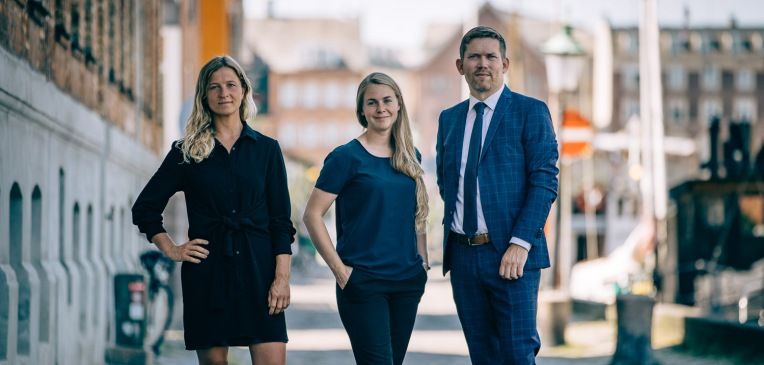- Denmark-based Agreena has raised €46 million ($50 million) in Series B funding for its soil carbon program that financially incentivizes farmers to transition to regenerative agriculture practices.
- Germany’s HV Capital led the round with participation from new investors including AENU and Anthemis.
- Existing investors also participated and include Gullspång Re:food, Kinnevik and Denmark’s Export and Investment fund.
- Agreena will use the funding to further build out and expand its carbon farming initiatives, including those that connect farmers with climate-conscious corporates.
A climate inflection point:
The most recent IPCC report lists the area of “land, water and food” as one of the most important opportunities for climate mitigation through better crop management and biodiversity as well as carbon capture and storage, to name a few.
“There’s an inflection point that will happen over the next few years where this needs to be the new norm,” Agreena CEO and co-founder Simon Haldrup says of agriculture-based climate mitigation strategies.
However, the road to that new norm is littered with challenges. Farmers are, in Haldrup’s own words, hesitant to adopt more regenerative practices that capture and store soil carbon because “they’re worried about impact on the yield.” Those that do participate in these programs often find the required changes impractical to daily farm operations and the payouts not enough to offset the costs.
A recent survey from Purdue University’s Center for Commercial Ag found that just 1% of US farmers had signed carbon contracts. Over in Europe, many small-scale farmers are skeptical about the European Union’s climate plan and point to the heavy burdens — financial and otherwise — farmers bear to capture and measure carbon.
These and other reasons, including political barriers, says Haldrup, drive the need to make regenerative agriculture simply about “good business” for the farmer versus being about taxes and legislation.
“This is about more than just carbon credits,” he says. “It’s a wider play in order to make [carbon farming] viable and drive a whole regenerative movement.”

How Agreena works:
Agreena’s software platform helps farmers to plan, track and validate their transitions to regenerative agriculture practices that store soil carbon. It is primarily focused on helping farmers build a revenue stream and overcome technical barriers.
- Upon signup, farmers use the Agreena software platform to locate their farm and various fields.
- From there, they add in data on their existing farming practices, typically stretching back five years. Farmers manually input some of the data; other data comes from publicly available sets. “The whole point is to establish a baseline,” says Haldrup. “Once that baseline is in place, we have a firm starting point, very specifically on that field.”
- Farmers can then use the Agreena software to simulate different strategies to calculate potential revenue streams from different cultivation activities. For example, they might test what would happen if they implemented cover cropping or combined that practice with reduced tillage.
- After picking a strategy and implementing regenerative practices on their actual fields, farmers can update the Agreena platform throughout the year with progress.
- After harvest, Agreena verifies the farmer’s data using satellite imagery, external data and information from onsite inspections.
- A third-party then verifies the entire process.
- Once the third party has verified, Agreena issues carbon credits to the farmer and can assist them with the process of selling to voluntary carbon markets.
- Farmers sell their carbon credits to fund new machinery for regenerative agriculture, mitigate short-term yield loss, and sustain the profitability of their business so they can continue to produce food.
Haldrup stresses this is a continuous process; ideally farmers are already starting simulating strategies for their next crop by the time Agreena is finished verifying the previous one.
Agreena also serves corporates hoping to buy carbon credits to offset emissions. Agrifood corporations, in particular, can use the platform to better trace the supply chains of their agricultural commodities and comply with Scope 3 requirements, says Haldrup.
Validating at scale:
Agreena says it has scaled its activities 10X since the company’s €20 million Series A raise in 2022. The Agreena platform is now available in 16 European countries and has helped transition more than 600,000 hectares, or roughly 1.5 million acres to regenerative ag practices, according Haldrup.
He says last year’s acquisition of Hummingbird Technologies has hugely boosted Agreena’s ability to scale its business.
The deal brought Hummingbird’s monitoring, reporting and verification (MRV) in-house, strengthening the validity of Agreena customers’ carbon credits.
Haldrup says the acquisition was about gaining a core IP to be able to verify carbon farming at scale.
“Farmers’ self-reported data only holds a certain quality. Being able to have market-leading, external verification at scale and using satellite imagery, data and machine learning has been hugely helpful. And not just in the terms of verification but also for helping the farmer get started. Otherwise this can be an operationally challenging process just to capture all the data.”
Addressing future challenges:
Agreena will use the Series B funding to continue building out its platform.
Broadening the data available to use is a big part of this.
“The financial service sector and the food supply chain are in dire need of better data in order to be compliant with Scope 3 targets but also for sourcing regeneratively,” says Haldrup. “Multiple food companies have set up [targets] that require transparency throughout the food supply chain. Some of the tools we have developed service some of these players. So we’re broadening out the perspective a little bit from the farmer to the wider ecosystem.”




